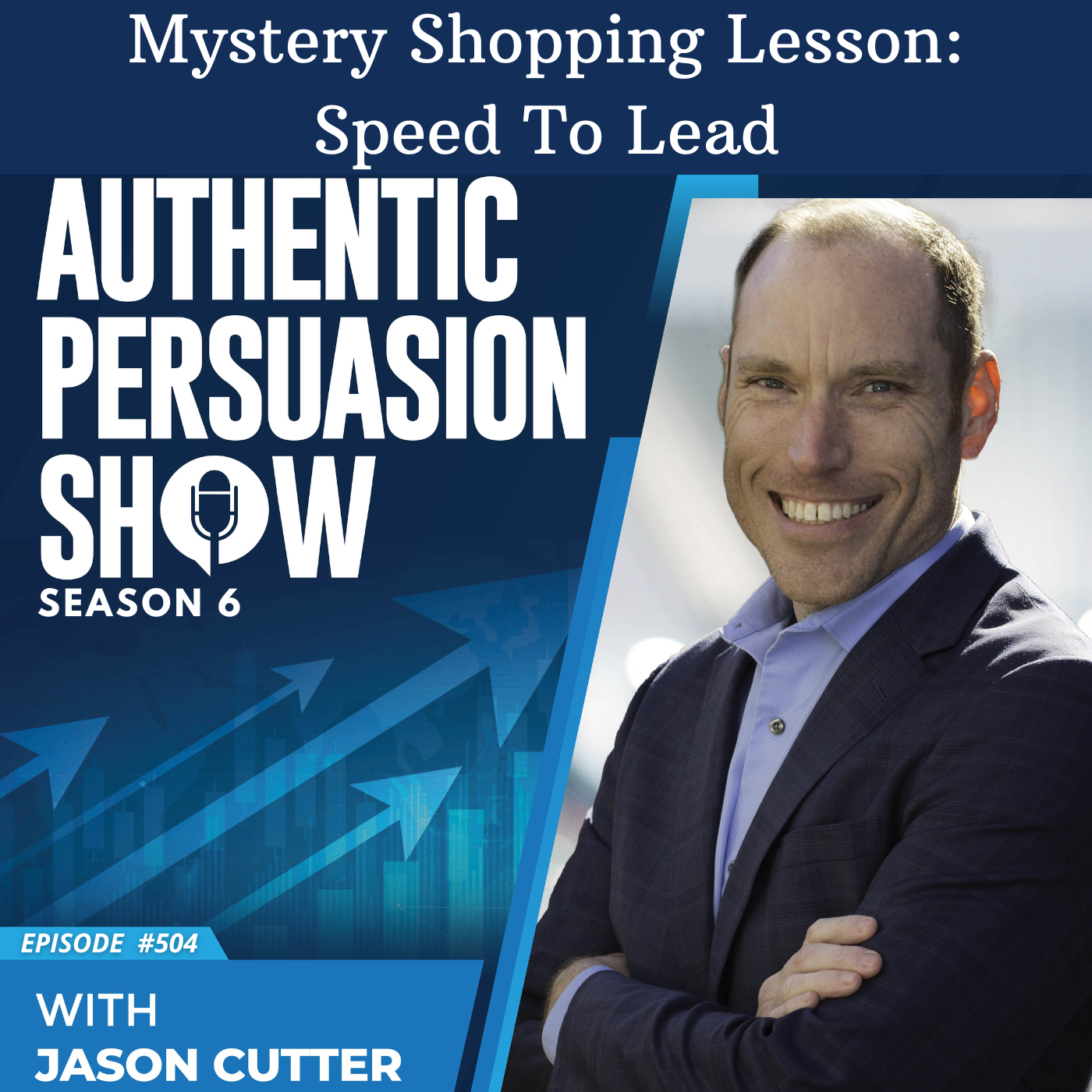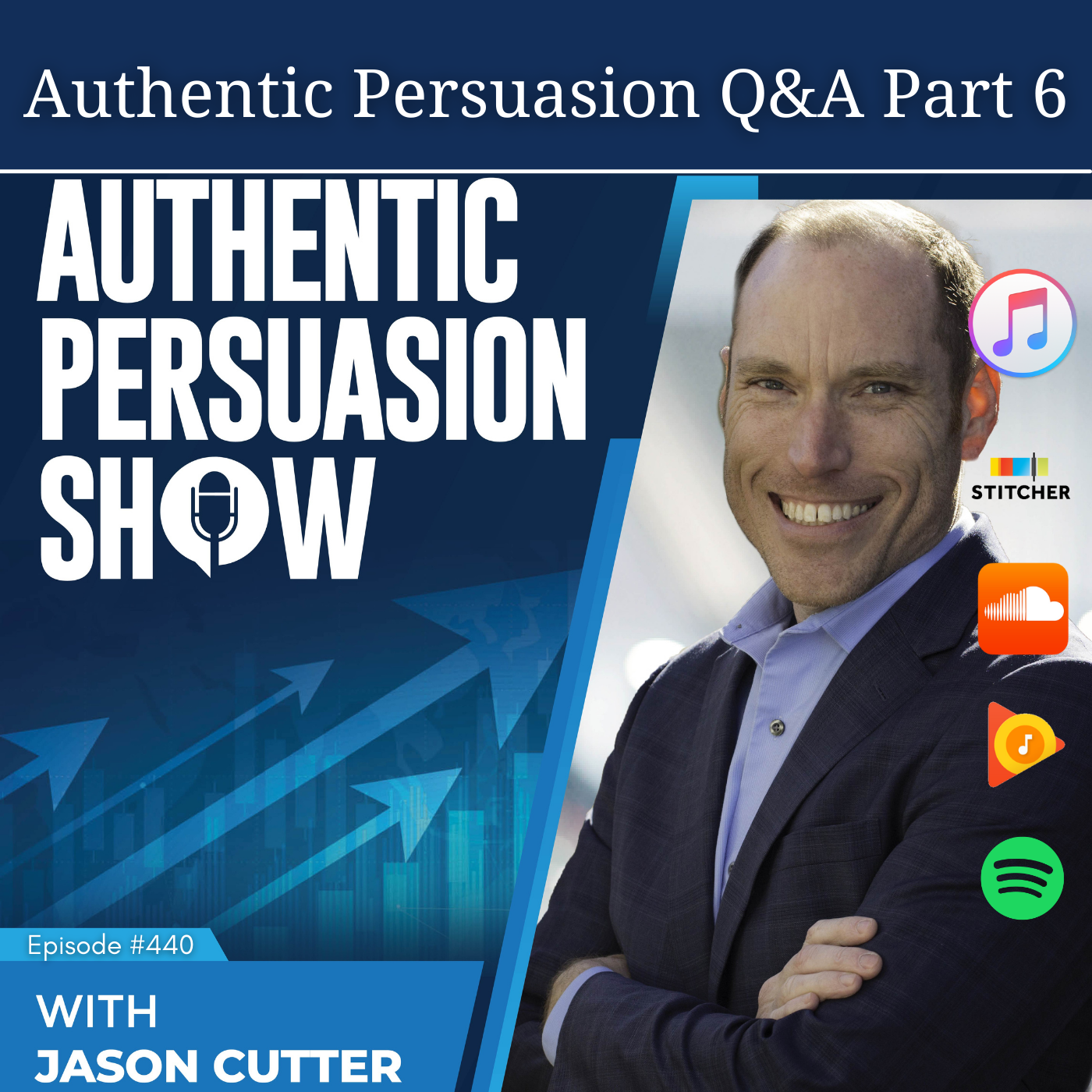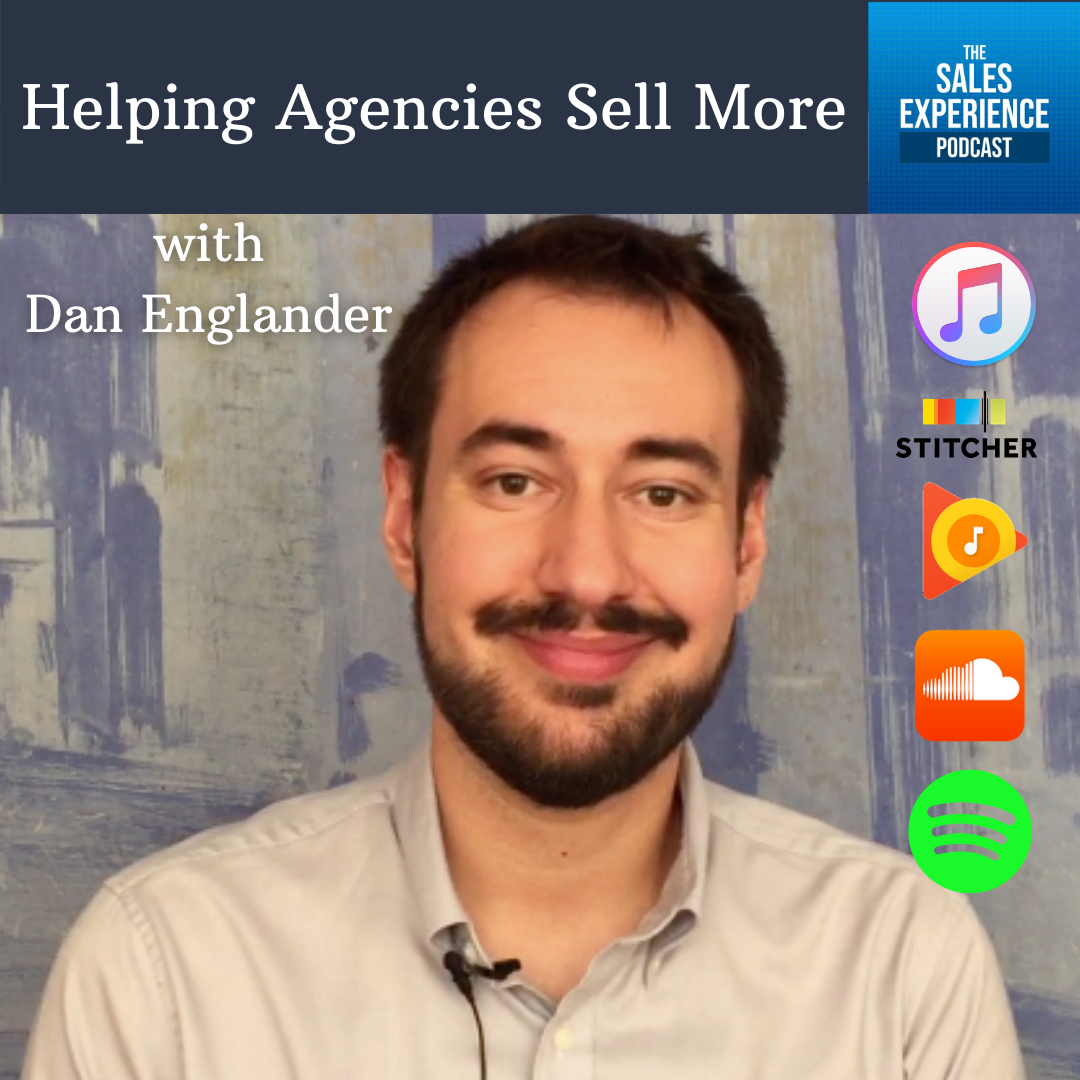Show Notes
On this next 4-part series Shawn Finder, from AutoKlose and I talk about sales automation, finding the right amount to use without going full-auto (still need humans involved!), and the processes he has used with his teams to create success.
In Part 1, Shawn and I talk about:
- Living in the Canadian Silicon Valley
- Dialing in the right amount and cadence of sales automation
- Getting your SDR team to engage with prospects strategically
- Why do prospects always answer when a manager calls?
Download The Power of Authentic Persuasion ebook
Enroll in the Authentic Persuasion Online Course
Connect with Jason on LinkedIn
Connect with Shawn on LinkedIn
Shawn’s Bio:
Shawn Finder has always been an entrepreneur at heart. At age 24, Shawn entered the entrepreneurial world after competing as one of Canada’s top-ranked tennis players. He started out importing packaging from the Orient and selling to top retailers in North America. However, knowing he always loved selling and list building, he founded ExchangeLeads in 2013 which helps his company build quality lists for outreaching new prospects. This was followed by his new venture Autoklose in 2017 that combines both sales engagement and list building all-in-one platform
Social Links:
LinkedIn: https://www.linkedin.com/in/shawnfinder/
Twitter: @autoklose
Instagram: @sfinds
Website: www.autoklose.com
B2B Sales Handbook: https://autoklose.com/books/b2bsales
673 Years of Sales Excellence
Book: https://autoklose.com/books/salesleaders
Books:
B2B Sales Handbook: https://autoklose.com/books/b2bsales
E172 – Transcript
Jason: Hey, welcome to the sales experience podcast. My name is Jason Cutter. On today’s episode I have Shawn Finder. He is the CEO of auto klose and that’s with a K at one point he was a top rank professional tennis player, traveling the world and then went on to be entrepreneurial and sales with his kind of destination has focused his path. And today he’s all about business and working with companies to help them with their sales process, their lead generation, all of that Shawn, welcome to the sales experience podcast.
Shawn: Jason, happy to be here and can we for our conversation today.
Jason: Yeah. And thank you for being my second of season two, my second Canadian guests and my second guest from Toronto. So I’m super excited to expand the reach here and uh, you know, it’s fascinating how many like sales, business development type people I’m connecting with and finding that are, are in Canada.
Shawn: Yeah, no, it’s funny. When I was at South North last week and I couldn’t believe all the SAS companies coming into Canada. You look 10 years ago, things have definitely changed and there are a lot of great things happening here in where I’m from.
Jason: Is that like just completely different side note off the topic of what I wanted to start with, but is Toronto kind of becoming, is it like a Canadian Silicon Valley? Do you guys have like a term for where you guys fit into a…
Shawn: I believe we are. I mean you know Toronto downtown is however you know a lot of startups are kind of now in Waterloo, which is about an hour from Toronto cause a Toronto real estate market is just through the roof. So a lot of companies can’t afford the office space in downtown Toronto city. Kind of been going to Waterloo, but I would say we are trying to be the next Silicon Valley, at least that’s an investor saying nowadays.
Jason: Well and before prices in the Bay area, San Francisco Bay area, Silicon Valley became really expensive. That’s where everyone was at. Silicon Valley is South of San Francisco because San Francisco is expensive. And then just all of it became expensive so it didn’t matter.
Shawn: Oh, uh, I know I, you know, even anywhere within a half an hour of Toronto now is very expensive and you need at least two incomes to be affording it.
Jason: There you go. So where I want to talk about and kind of start our conversation with your, your experience, your focus kind of, you know, what you’re doing out there in the world of sales is you are another podcast and those sales related podcasts and you were talking about sales automation tools, which I think are important and they help companies in valuable ways. But what I found the most fascinating and really where I wanted to start was your concept and what you talked about is that companies are trying to automate too much and it seems like companies, everybody wants to automate everything in AI and they may say they don’t want robots to take over the world, but like everyone’s pushing that and they want to rely less on people.
Jason: And then you’re coming across saying like, companies are actually trying to automate too much in the sales process. So let’s talk about that.
Shawn: Yeah, so you know, I just believe that, you know, nowadays people look at, you know, you can’t rely on one channel. So a lot of people are using you know, sales engagement tools, sales automation tools and thinking, okay, I’m going to plug and play, you know, press start campaign and it’s going to follow up and automate my followup. But you know, the problem nowadays is you have to have different channels inside any automation. So even if you are doing automation, you still need to get on the phone and make some calls. And ideally, which I like to tell people is you need to go on LinkedIn
Shawn: and do some sort of social touches. Because if you’re not, then you’re going to miss out on really building that relationship with that prospect who once you build that relationship and you send that email number two, email three, they might say, Oh, I remember Jason liked or commented on my post on LinkedIn. Let me see what he wrote in the email. So you’re going to kind of interact and engage with different platforms right now and different channels to be successful I believe.
Jason: Is there like in your experience, you know, for anyone listening to this, is there a right ratio or a formula? Everyone seems to have a formula for everything. Is there something that works well for that balance of automation and systems and then the relationship?
Shawn: I mean, what I like to tell people is you’re going to test internally because you know somebody that is selling apples might be a different, you know, than someone selling software. So it all depends on your industry, who you’re selling to, you know, is the person that’s buying an introvert versus extrovert, is it a VP of sales versus just an STR? So I think you have to gear your messaging and your automation towards your salary. But you know, for me internally, what I find is, you know, I like to do like almost like a 14 by 14 where you’re doing 14 different touches. You know, a handful might be emailed, two to three might be, you know, calls in between that sequence. And the other one might be something that’s not tangible, which is just, you know, liking, endorsing, sharing, commenting, posting on some prospects post on LinkedIn where you’re not actually calling them or emailing them or you are getting your name in front of them. So I would say, you know, there’s not really any number, but it all depends on who you’re selling to.
Jason: And so when we’re looking at this and this 14 by 14 is you know, what kind of scale of operation or better yet, like scale of sales goals or demo setting. Like what, where are we talking? Because that to me sounds like a lot of involvement, especially relative to a lot of companies and people I talked to where their SDR team is just powering through and just making a hundred phone calls a day and doing lots of outreach. Like where does that fit into kind of the goals of a company?
Shawn: Yeah, so that would be at the SDR stage, but no. So what we’ve done is like you just said, however we do the phone call, but we try and do, you know, a hundred accounts. So we’ve tried in the past where you know, here’s a list, call cold call everyone. But now what we’ve done is we’ve really targeted, so for example, you know on this sprint for this two week 14 by 14 we’re going to focus on the transportation industry. On this sprint we’re going to do in every two weeks we add more accounts to their 14 by 14 they’ll remove the ones that are not interested or let’s continue to push them, you know, in our different columns in our CRM towards closer to trying to close a demo, which then goes to, you know, our AAE or what we call like is like a closer. So I would say the 14 by 14 is obviously an SDR role, but it really helps them find out a, who they want to prospect to. But B, put those 14 through different touches and not only automation so they can really get the best results from that prospect.
Jason: And what’s the timeline for this? 14 by 14 do you have like a certain number of days or weeks that this has done over?
Shawn: Yes. To be honest, it’s, it’s actually 14 touches in 14 days. Yeah. I would say at least 50% of those aren’t involving an email or a call. They’re involving some sort of social, it could be just adding them as a connection on LinkedIn as a touch. So you’ve just added them on LinkedIn, but that’s all you’ve done. That would be considered like one, but there’s 14 different things you have to do that we’ve planned out within 14 days.
Jason: And how much of that is the phone calls?
Shawn: I believe it would be about three. I think it’s three calls in the 14 days. And that’s expecting that you might call them and you know they’re not going to answer or you might have to leave a message. So they’re, you know, there’s always those variables that come into play as well.
Jason: Sure. Well, and the reason why I asked that is because what I hear a lot in the marketplace of sales teams that I encounter or work with is that nobody wants to use the phone right there. Nobody’s answering the phone when they call or they’re just assuming, especially if it’s a B2B sale, especially if it’s SAS, they’re just assuming at the other end of the line are people who aren’t going to want to answer the phone. Right. And I think that’s important. Like you’ve got to have some phone calls in there. You can’t just completely give up totally on the phone.
Shawn: 100% to be honest, it was something that I, you know, about a few months ago, I sat down with my team even and I was like, okay, everyone was sending emails and I can tell it was almost like some of my rep reps in general just don’t want to make that color. It’s not like they’re, I mean they’re scared, they’re nervous, but the results that you’ll get from actually making those calls, I actually, I remember saying to somebody else saying to VP, I was like, listen, he’s like, I can’t get ahold of my tribe three, four times. Get on the phone. I’ll get on the phone, I’ll dial him right now. If I got on the phone, I’ll be able to talk to you. I actually called and got him on the phone. So I think you can’t eliminate phone, you’ll never be able to eliminate phone. You just have to be strategic on, you know, if you try them in the morning, one day you’ll try them, the African the next day, if they’re a C level person, you might want to try them like between seven 30 and nine or five to 6:00 PM he goes during the day like a CTO, CIO, you know, they’re running around, you know, burning fires. We’re throwing out fires all over the organization. Right. So I think if to be strategic on when you’re making those calls as well.
Jason: Yeah, and I’ll tell you as a funny side note is every time I’ve ever done this or I’ve seen anyone do what you’re exactly talking about, which is a rep says, I can’t get ahold of them and not answering. It’s like, let me try. There’s something I don’t know. I don’t know if it’s just coincidence or luck every single time somebody else, especially higher up a manager calls somebody prospect or lead or client. They always answer.
Shawn: Every time, every time, every time it happens. It happened a few days ago and I was just like, and I almost feel bad doing it cause I have to go back and be like, Hey, I’ll be like, I just called them and answered, why don’t you ain’t just like, Oh Hey, you starts getting nervous. He fits. He thinks he’s in trouble. But it’s, it just, you can’t eliminate the phone. And I think, you know, one thing we did early on was kind of did an activity to get people more even used to rejection, but give them some sort of activity on the phone that isn’t even selling a product. Just to get them on the phone. Familiar with hearing people’s voices and having those conversations.
Jason: Yeah, it’s totally funny. And that side note, for anybody out there listening to this, that you’re in sales and you have prospect that’s not answering. You really want to talk to just have your manager call or the owner of your company, have them call 100% they will answer, you will look bad because they got it done in one phone call, but at least you got it done. So, and then you know what you’re talking about with just doing those activities where you make the phone calls and get with the phone and it’s not even a generational thing. Like a lot of times, and I mentioned this a lot on this show, is you know the finger pointing. Sometimes we’ll go to the millennials or younger where they’re not on the phone, they’re not using the phone, they’d rather text. But it’s for everybody. I mean I think everybody or most everybody has shifted away from using the phone or even wanting to answer the phone because they just know it’s going to be crap.
Jason: And so everyone kind of projects that everywhere. But I remember one point early on for myself in my career, I had a telemarketing manager and what he used to do was to show everyone how it worked as telemarketing cold call, like business to consumer is he would literally just make a cold call and then even without the intention of getting that person transferred to the sales team, he would just have a conversation for as long as possible with this random person out of the blue to show everyone that you could just talk and he would sometimes talk to somebody cold for 2025 minutes about weather, about recipes, here’s just show the team. It’s like just, it’s just a person.
Shawn: It’s, it’s funny you say that. So you know, one of the activities that we had, and I come up with different activities, but when we were, you know, when they were starting out, they weren’t, they’ve never been on the phone before. I actually had them call different companies and pretend that they were a restaurant and they wanted to send them corporate lunches and I wanted them to stay on the phone as long as you can to find out, Oh, who are you using for your corporate lunches when you bring stuff? Oh do you not have it? And they actually, so what we did was we actually kept track of how long their calls were, listened to the recordings after he gave them tips. But we’ll also do just random, we’ll just come up with a random thing once a week for three weeks and every week you’d have to do it. And it was like just a random activity we’d come up with, has nothing to do with our product or service, but just to get them used to a getting rejected on the phone cause we want them to get rejected enough. They realize not everyone you’re going to cause me to say yes, I want to buy your product or service. Yeah.
Jason: Alright. That’s it for part one of my conversation with Shawn Finder. Make sure to go to cutterconsultinggroup.com/podcast or click on the podcast link on the front page and find this episode. You can find the transcript. You can also find Shaun’s links for him on LinkedIn as well as his website. And as always, remember that everything in life is sales and people remember the experience you gave them.
![[E172] Doing Sales Automation Right with Shawn Finder – Part 1 of 4](https://episodes.castos.com/salesexperiencepodcast/images/Shawn-Finder-Cover-Image.png)


